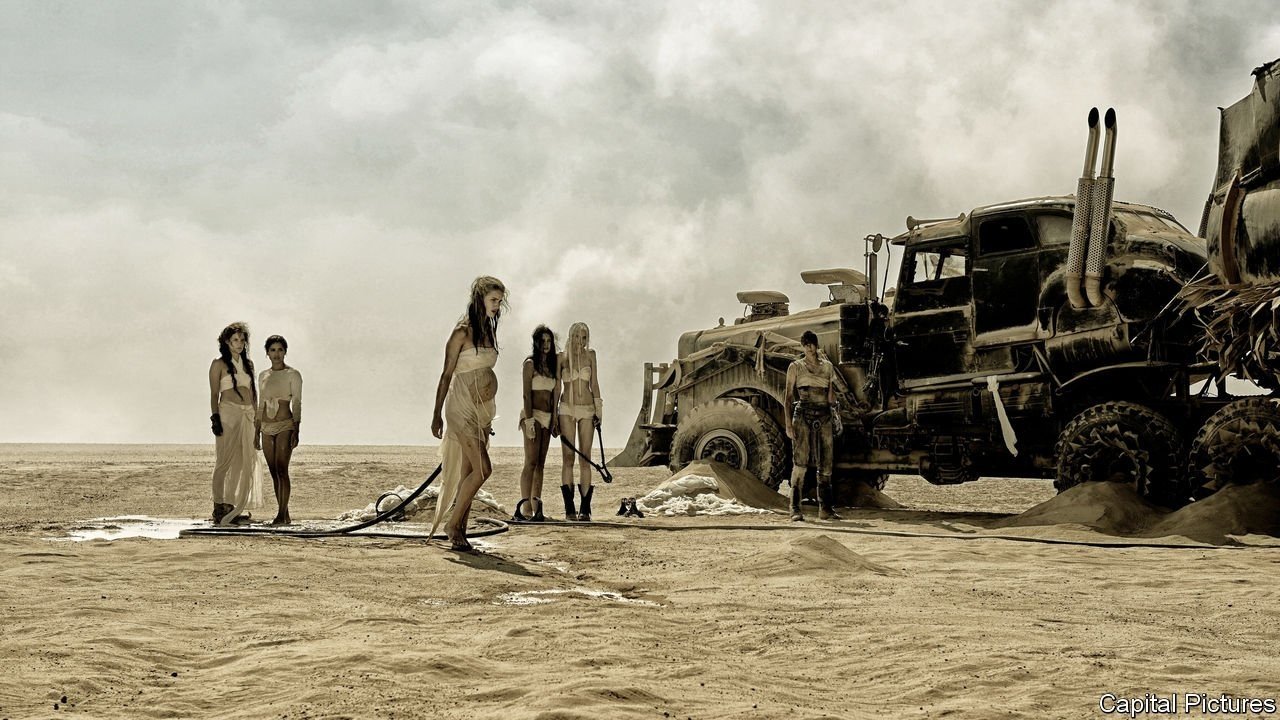SEVERAL SHOWY Hollywood blockbusters have imagined a world devastated by climate change. In “The Day After Tomorrow” (2004), the most famous example of a “cli-fi” disaster film, the planet is beset by superstorms, hurricanes and tsunamis. A paleoclimatologist must save his son as the globe is plunged into a new ice age. Environmental devastation is the backdrop to dystopian stories, too—think of the desert world of “Mad Max: Fury Road” (2014, pictured), the smog-filled city-scapes of “Blade Runner 2049” (2017) or the icy tundra of “Snowpiercer” (2013). Climate change may also be the MacGuffin that forces characters to abandon Earth and seek a new home elsewhere, as in “Avatar” (2009) or “Interstellar” (2014).
In each of these examples, the altered climate is depicted as a fait accompli, something the characters must survive but cannot influence. Some green activists worry that such portrayals warp viewers’ perception of the crisis and their role in it. Particularly vocal is the National Resources Defence Council (NRDC), an environmental group. Though it primarily focuses on legislation and litigation, the NRDC has ties with Hollywood: Alan Horn, a long-time trustee of the organisation, was also co-chairman of Walt Disney Studios until December, and campaigned for […]


Capital Pictures
Add a comment






